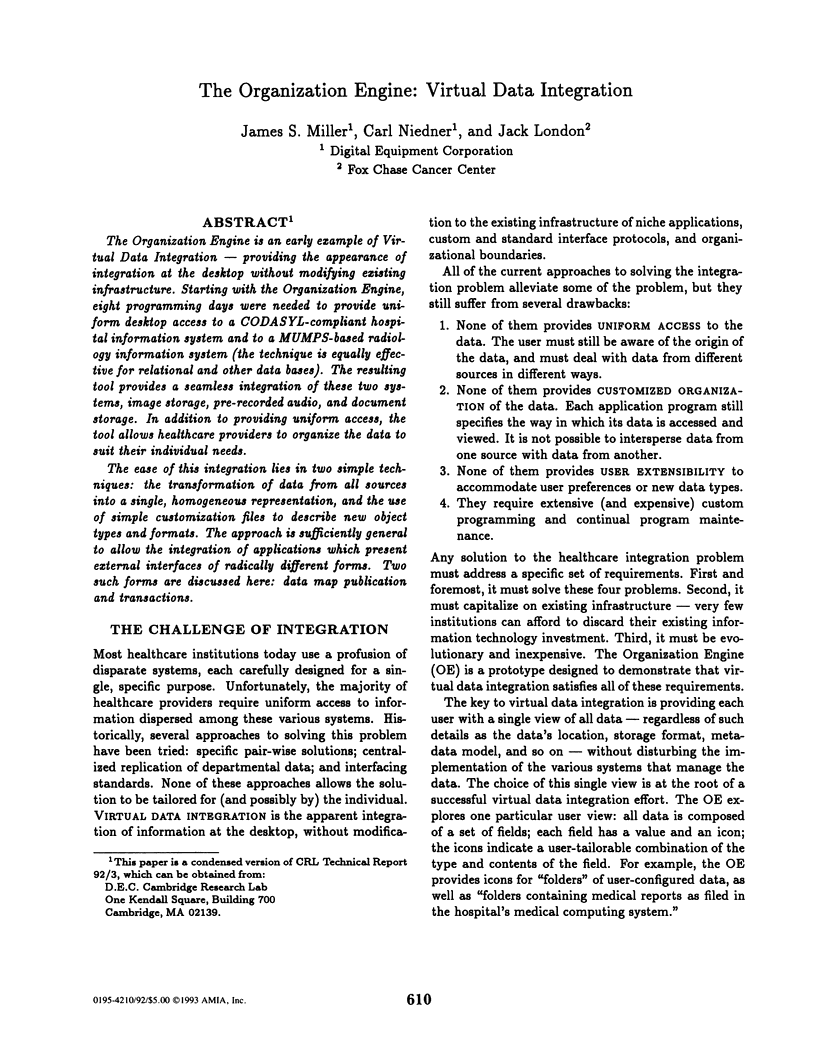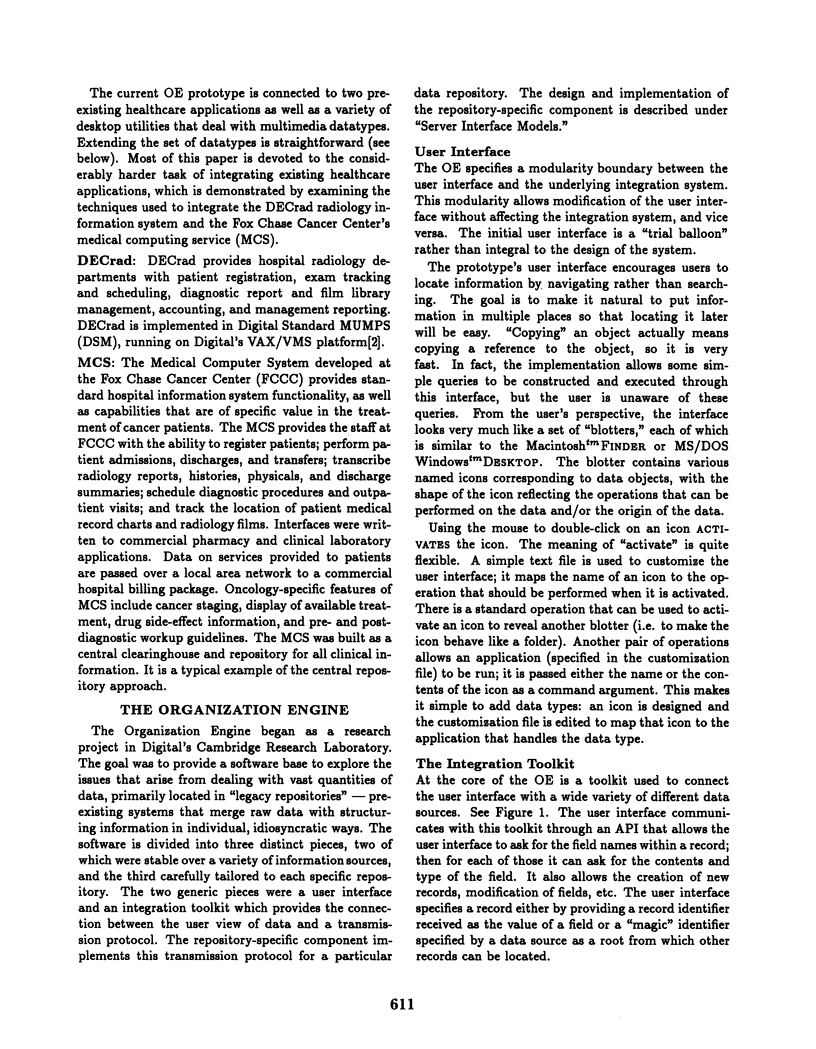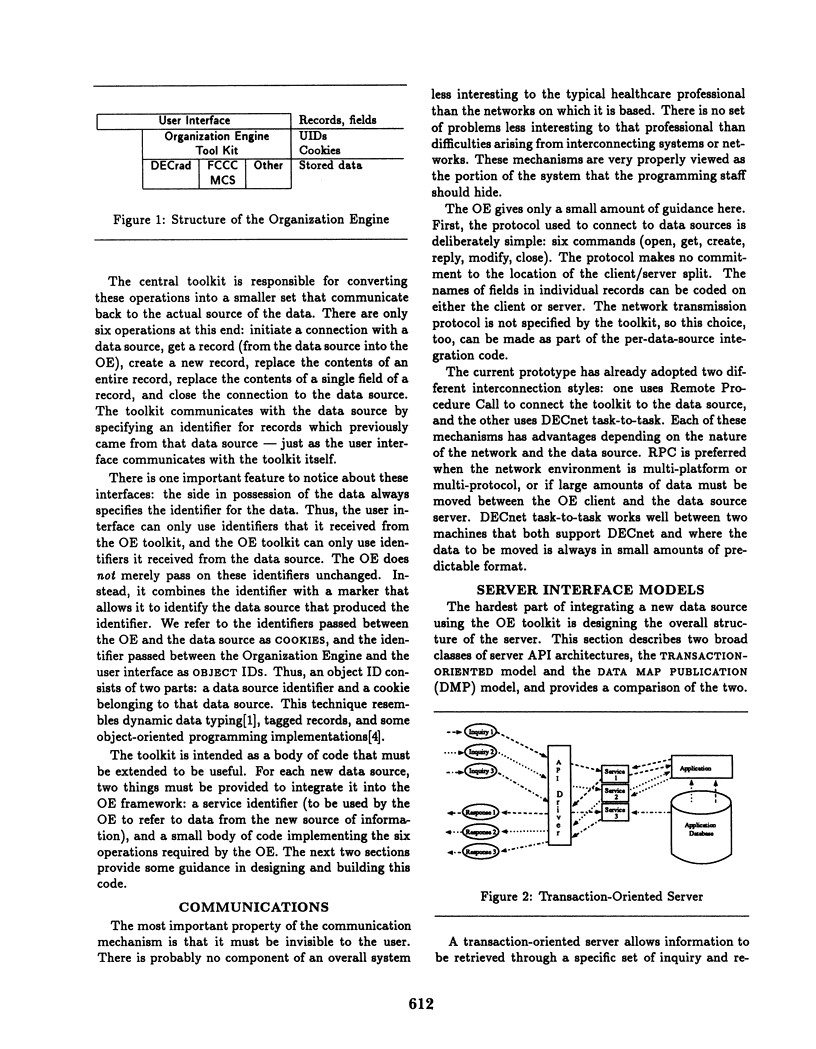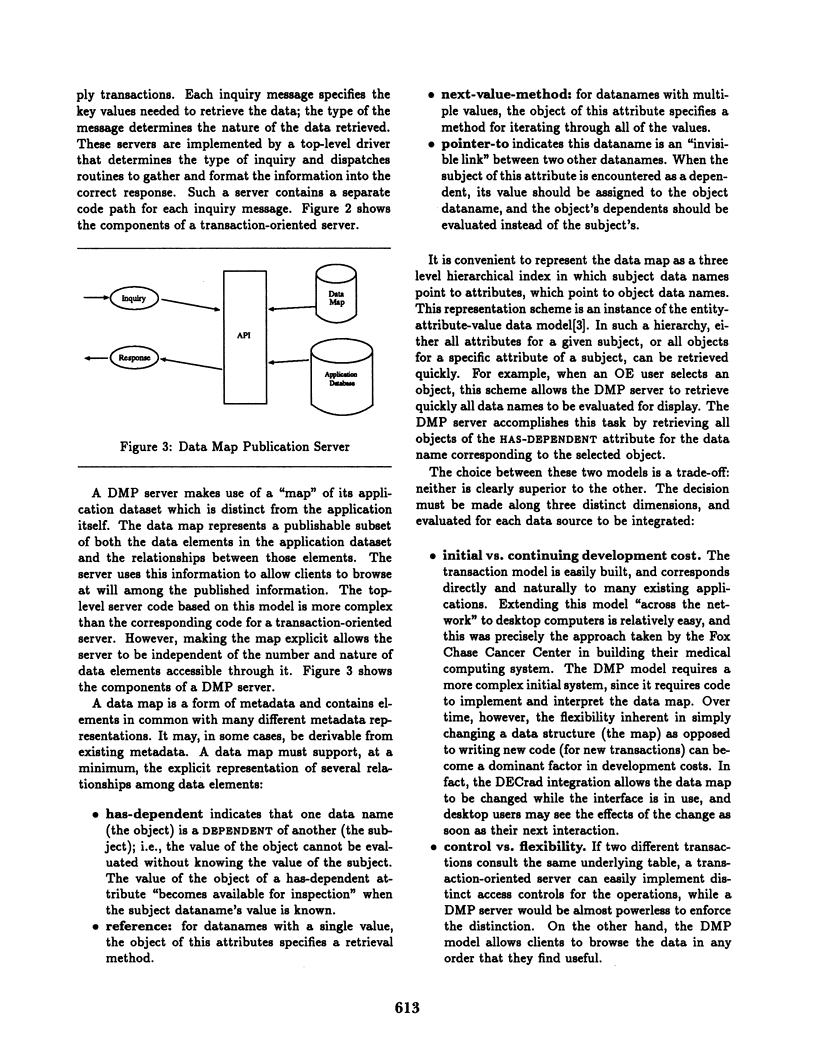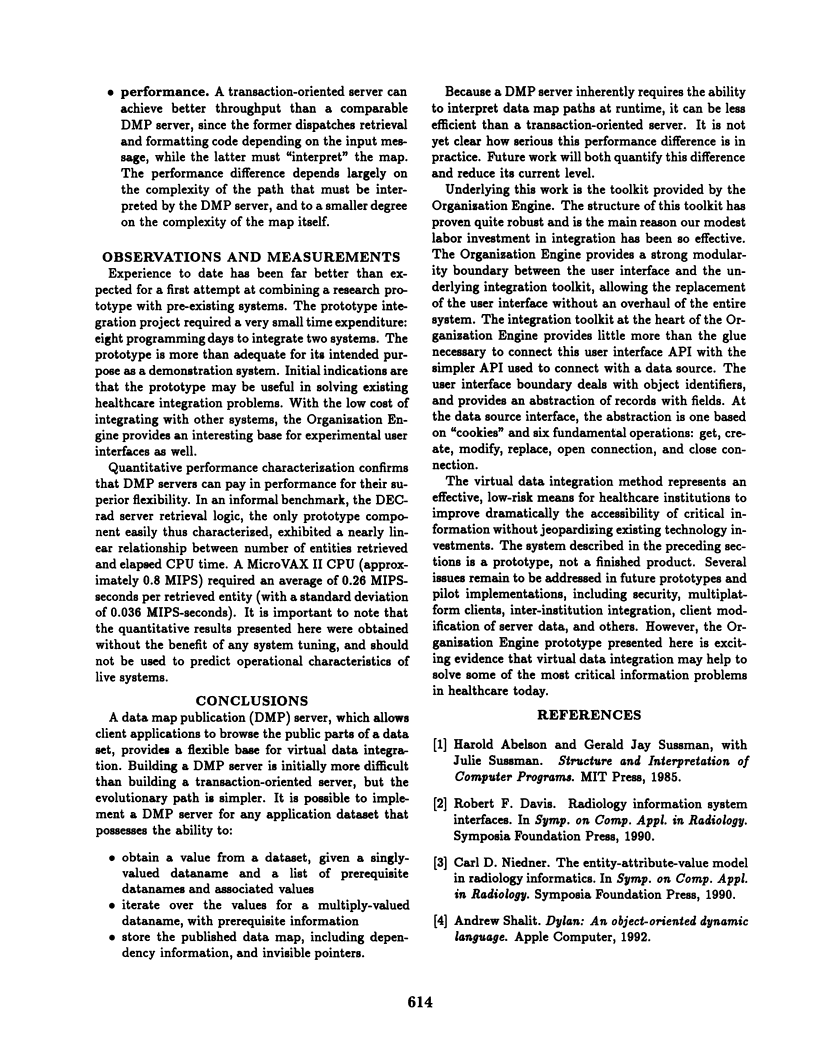Abstract
The Organization Engine is an early example of Virtual Data Integration--providing the appearance of integration at the desktop without modifying existing infrastructure. Starting with the Organization Engine, eight programming days were needed to provide uniform desktop access to a CODASYL-compliant hospital information system and to a MUMPS-based radiology information system (the technique is equally effective for relational and other data bases). The resulting tool provides a seamless integration of these two systems, image storage, pre-recorded audio, and document storage. In addition to providing uniform access, the tool allows healthcare providers to organize the data to suit their individual needs. The ease of this integration lies in two simple techniques: the transformation of data from all sources into a single, homogeneous representation, and the use of simple customization files to describe new object types and formats. The approach is sufficiently general to allow the integration of applications which present external interfaces of radically different forms. Two such forms are discussed here: data map publication and transactions.
Full text
PDF